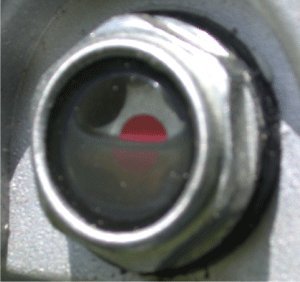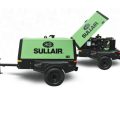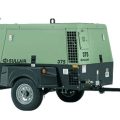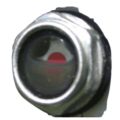Hey! This site is reader-supported and we earn commissions if you purchase products from retailers after clicking on a link from our site.
It can be quite a daunting task trying to figure out how to change your Sullair compressor oil, how much to use and what the correct oil to use is right? Well, fear no more, I will answer all these questions in relation to Sullair compressor oil for you.
Table of Contents
- What kind of Oil goes in a Sullair Compressor?
- How much Oil to use in a Sullair Compressor?
- How to change Sullair Compressor Oil
- Sullair Compressor Oil FAQs (Frequently Asked Questions)
What kind of Oil goes in a Sullair Compressor?
It is extremely important to refer to your compressor manual before purchasing oil for your Sullair compressor. The manual will tell you what oil is compatible with your air compressor, if you cannot locate your manual, please contact Sullair directly or visit their website to download a manual for your compressor.
Sullair Compressor Oils on Amazon
Sullair is a Hitachi group company that offers high-quality compressor oil that can help keep your Sullair compressor running smoothly. Though Sullair does not directly sell their oil on Amazon, I have picked out a few Sullair replacement oils specifically for Sullair compressors readily available on Amazon that could match your requirements.
The first is the Equivalent Oil for Sullair« SRF 1/4000 by Killer Filter below. It is a highly refined, hydro-treated petroleum base fluid suitable for Sullair rotary screw compressors.
- A superior USA made replacement lubricant offer by Killer Filter to replace Sullair« SRF 1/4000 in a cost effective manner with 0 loss of quality guaranteed!
Prices pulled from the Amazon Product Advertising API on:
Product prices and availability are accurate as of the date/time indicated and are subject to change. Any price and availability information displayed on [relevant Amazon Site(s), as applicable] at the time of purchase will apply to the purchase of this product.
The second is the Killer Filter Replacement for Sullair Sullube 32 Oil 250022-669 presented below, this polyglycol based air compressor oil
Prices pulled from the Amazon Product Advertising API on:
Product prices and availability are accurate as of the date/time indicated and are subject to change. Any price and availability information displayed on [relevant Amazon Site(s), as applicable] at the time of purchase will apply to the purchase of this product.
Sullair Compressor Oils
The following specific Sullair compressor oils have greater information on the Sullair website including where you can buy each oil:
- Sullube
- 24KT
- SRF 1/4000
- SRF II/8000
- AWF
Other Alternative to Sullair Compressor Oils
A few alternatives to Sullair’s own compressor oils or their direct replacements are produced by Mobil. Again, it is very important to ensure the oil is compatible with your air compressor before putting it into the system, so please check first!
The first is the Mobil 101016 Rarus, which is suitable for reciprocating air compressors, whether they’re single or multistage. This oil lubricant boasts excellent water separability, protection against rust and corrosion, long life for extended oil drain and provides your compressor with very clean air valves.
Prices pulled from the Amazon Product Advertising API on:
Product prices and availability are accurate as of the date/time indicated and are subject to change. Any price and availability information displayed on [relevant Amazon Site(s), as applicable] at the time of purchase will apply to the purchase of this product.
The second is the Mobil 100870, boasting similar benefits as the previous oil but potential to work with reciprocating, rotary screw and rotary vane compressors.
Prices pulled from the Amazon Product Advertising API on:
Product prices and availability are accurate as of the date/time indicated and are subject to change. Any price and availability information displayed on [relevant Amazon Site(s), as applicable] at the time of purchase will apply to the purchase of this product.
How much Oil to use in a Sullair Compressor?
It’s very difficult to determine how much Sullair oil your specific compressor pump requires without having the manual at hand.
If there is no manual available, I advise that you contact Sullair directly or begin an internet search for the specifications of your Sullair compressor and its model to get the exact amount of lubricant you should put into your Sullair compressor.
It’s hard to give you an exact number on how much you need, however, I can give you tips on how to check the Sullair oil amount inside your compressor and then tell you how to go about changing it.
Sullair Oil Sight Glass
Below is an image of a sight glass with the Sullair oil filled to about halfway up the red dot inside the glass. They allow you to check the level inside your pump, and you should aim for your Sullair oil to be at this level.

Sullair Oil Dipstick
Sometimes, sight glasses may not be present. Instead you can look to use the sump dipstick. These can typically be found as part of the Sullair oil fill tube cap and extend down into the sump and Sullair oil.
To check the Sullair oil level, remove the dipstick and wipe it. Then “dip” it back into the sump and when you pull it out again you will be able to know the Sullair oil level from the markings on the stick. This will help you know whether you need to add more oil or not.

Alternative Method for Checking Sullair Oil
An alternative method is draining the oil from the tank if you do not have a sight glass or dipstick.
How to Drain Oil from the Sump
Locate the plug underneath the compressor pump housing that will thread out and allow your Sulair oil to drain. You must be really careful not to drip dirty oil all over everything. Lay out something on the floor beneath the drain, one that won’t be damaged by Sullair oil leaking onto it in the case that you do have a spill.
You can now drain the Sullair oil out into a reservoir that can be used to estimate exactly how much Sullair oil was in your sump. Then you can ensure you put the same amount back in.
How to change Sullair Compressor Oil
Changing Sullair oil on every model of compressor varies. The first question is whether your compressor is definitely lubricated.
If you are not so sure and you cannot locate your manual, I will recommend navigating to the Sullair website, finding your local outlet using the guide provided, and asking them about your specific model!
Changing Sullair Compressor Oil Process
After draining the Sullair oil from the compressor, following those steps just presented, replace the plug at the bottom of the compressor sump and ensure it is securely fastened.
At the top of the Sullair oil sump there should be a port where you can add the new Sullair oil. Due to many varying models of compressors, it’s difficult to be more specific than that, as they may have different Sullair oil-adding ports.
Please be careful when filling the compressor with Sullair oil to not accidentally put Sullair oil into the air intake port.
After you fit the plug back into the bottom of the sump, add the Sullair compressor oil into the fill port until you’ve added about the same amount as you have removed. Note: You certainly do not want to overfill the sump.
Summary
The above methodology can be simplified into the following steps:
- Check Sullair oil level
- Locate plug beneath sump
- Drain Sullair oil into a reservoir
- Tighten plug back into sump
- Locate Sullair oil port
- Replenish the compressor with the same amount of Sullair oil as removed (do not overfill)
Without access to each Sullair air compressor model manual, and assuming that the manual actually tells the reader what the Sullair oil volume is to be, there is no way to be anything but vague when providing the steps for changing Sullair compressor oil.
Sullair Compressor Oil FAQs (Frequently Asked Questions)
Oil in air filter – setting Sullicon control to inlet valve.
by ty edmaiston
(Lake Charles, LA, United States)
Oil haze is coming back up through air filter during shutdown?
Also how do you set the linkage correctly for the sullicon controller to the air inlet valve?
_________________________________
Sullicon control
These are likely related. The butterfly intake valve is supposed to completely close running unloaded, and gradually opens as demand increases.
The haze probably means the valve isn’t fully closing, which could be either maladjustment of the linkage or the sullicon diaphragm is failing.
__________________________________
Inlet Valve
Hi,
The reason that there is oil mist coming from the air filter is that the inlet valve isn’t sealing properly.
To stop this you need to fit a service kit to it, BUT if you try to do this yourself then you need to be very very careful, the inlet valve has a very strong spring inside it so if you don’t know how to dismantle it properly it can be fatal, so please please get a qualified compressor service engineer to do it.
I don’t know what you mean when you say “setting the linkages” on your compressor? Please could you give a little more information.
If you have any questions about Sullair compressor oil, changing it, which to use, and how to use it, then please leave a comment below with photos, if applicable, to help others respond to you!





